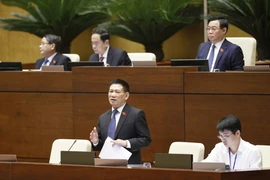At a conference of the transport ministry reviewing its work in the first halfof the year earlier this week, Thang said that fuel costs accounted for 40-50%of operation costs, and revenue increases were insufficient to compensate forhigh fuel prices.
He said domestic aviation transport had recovered with higher growth than inthe pre-pandemic period. However, Vietnamese carriers had not fully escapeddifficulties due to the slow recovery of the international market.
It was estimated that domestic carriers suffered a loss of nearly 100 billionVND per month on skyrocketing jet fuel prices.
Tran Thanh Hien, chief accountant at Vietnam Airlines, said Jet A1 pricesaveraged 72 USD per barrel in 2021, and carriers developed the scenario where theaverage jet fuel price was 110 USD for 2022. However, the fuel price reached 162USD, two times higher than last year.
If fuel prices keep increasing and are maintained at a high level for along time, no carriers will earn a profit, Hien said.
As domestic airlines were struggling with high fuel prices, the CAAV proposedthe Ministry of Transport consider reducing the environmental tax on fueltogether with gradually loosening caps on domestic ticket prices so thatairlines could be more flexible.
Le Hong Ha, general director of Vietnam Airlines, said that loosening the airticket ceiling would reflect competition in the air transport market. Thiswould help airlines to collect surcharges on customers who could afford it andbe an opportunity for the carriers to widen the price fluctuation range.
Bui Doan Ne, Vice President of the Vietnam Aviation Business Association, saidhigh fuel prices were a real challenge as domestic airlines had just gonethrough more than two years of difficulty due to the pandemic and had notyet recovered.
It was reported at the conference that in the first half of the year, thenumber of monthly international air passengers had increased from 103,500in January to 127,000 in February, 224,600 in March, and 445,700 in April,650,000 in May and an estimated 826,000 in June.
At the end of June, more than 30 foreign and four Vietnamese airlines were operating96 international routes between Vietnam and 21 countries and territories.Vietnamese carriers were using 68 international routes to 16 countries andregions.
In the domestic market, six Vietnamese carriers were operating 55-60 routesconnecting Hanoi, Da Nang and HCM City with 19 local airports. The lifting ofpandemic-related restrictions, along with booming demand, was bringing about afast recovery of domestic aviation transport, with the number of domesticpassengers growing from 10-15% each month in the second quarter.
The number of air passengers going through Vietnamese airports was expected toreach 70-80 million this year, including 8-10 million internationaltravellers./.




























